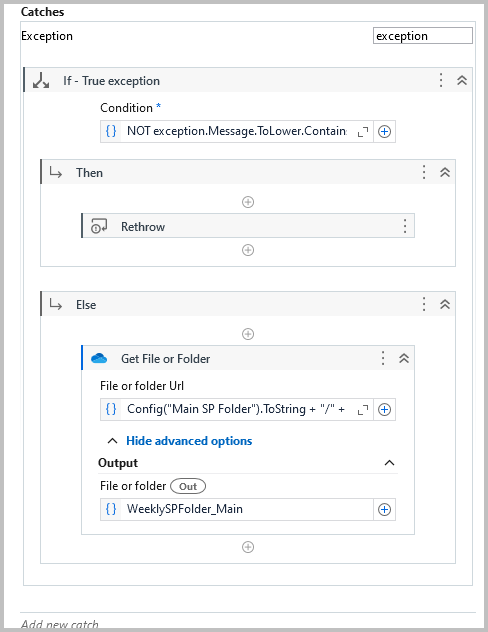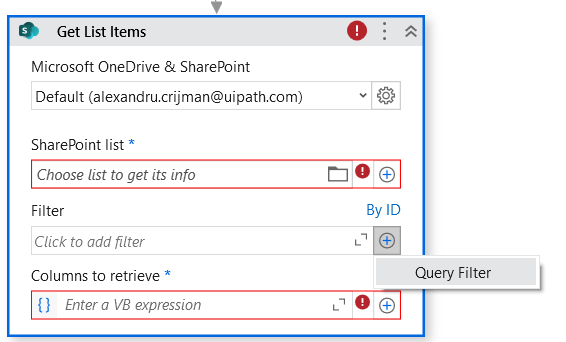I need to “Get List Items”, add queue items, then update a field on each list item (set a flag from false to true so we know it has been processed by the automation).
Office 365 - Classic
Why does the Get List Items activity return a datatable? How are we supposed to use Update List Item when it requires an item of type Office365SharepointListItem, and we have a datatable? The Get List Items activity should return an array of Office365SharepointListItem just like the Get Email List activity returns array of Office365Message.
Office 365
The For Each List Item activity doesn’t give us the ability to edit the name of the “currentitem” variable. This could be problematic in cases where nested loops are necessary.
The Get List Items activity again returns a datatable, not an array of Office365SharepointListItem.
The Update Single List Item activity uses the “List item ID” column to determine which to update. What if the ID field has been renamed? Will it still know which column is the ID field? Why doesn’t this activity just take in Office365SharepointListItem like the classic activity?
It also returns an item of DataRow for the item that was updated. Weird. Why don’t you give us MicrosoftOffice365ListItem?! It says in the property description “to be used further” but having it as a datarow is useless for using it further.
The “Office 365 - Classic” Get List Items activity’s “Columns To Retrieve” uses the display names of the columns, but the “Office 365” Get List Items activity uses the internal column name. This causes confusion and means I have to map and change the column names in the output datatable to use the display names in the queue item if I use the Office 365 version of the activity.


